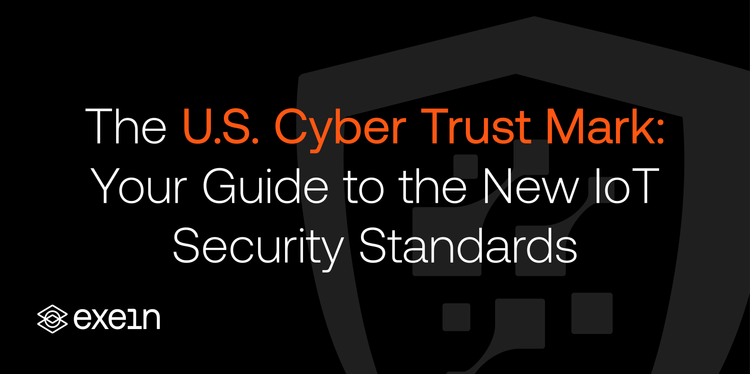Embedding Security in Every Step: The OEM's Guide to Cyber-Resilient Products

OEMs often find themselves in a power dynamic with potential cyber attackers, where each party's relative position is determined by their technical capabilities, resources, and the value they place on cybersecurity.
Like the delicate balance of power inherent in workplace relationships, OEMs grapple with an asymmetrical power dynamic. This is often reflected in the challenging dance between accelerating product timelines and ensuring a product's cybersecurity robustness.
However, rather than accepting a seemingly inferior position in this power dynamic, OEMs can indeed proactively tip the scales in their favor. By incorporating comprehensive and innovative cybersecurity measures throughout the entire product lifecycle, OEMs can not only fortify their offerings against evolving cyber threats but also build trust with their customer base. Here's a deeper look at how this can be achieved at each stage of the product lifecycle.
Design Phase
At this early stage, potential vulnerabilities can inadvertently be baked into a product, creating potential entry points for cyber attackers. To address this, OEMs should implement a 'security-by-design' approach, which calls for security considerations to be integral to the product design, rather than tacked on as an afterthought. This strategy requires careful forethought and planning, with a focus on identifying potential risks and developing appropriate countermeasures. In essence, a security-by-design approach sets the stage for a strong cybersecurity posture throughout the product lifecycle.
Manufacturing Phase
As products begin to take shape in the manufacturing phase, OEMs may feel the brunt of the power imbalance. With modern manufacturing processes growing more interconnected and automated, the opportunities for cyber threats multiply. To counteract this, OEMs should integrate advanced, proactive security measures within their manufacturing infrastructure. These could include real-time threat detection and response mechanisms, AI-driven analytics, and continuous monitoring systems. By doing so, the power dynamic can begin to shift back towards the OEM.
Delivery and Installation Phase
The distribution of products into diverse and potentially insecure environments introduces a fresh set of challenges. Like a diplomatic leader striving to harmonize varied interests, OEMs must navigate this phase with astute security considerations. This can be achieved by implementing a robust cybersecurity framework that includes regular firmware and software updates, patches, and comprehensive customer education on secure product usage and management.
Maintenance and Support Phase
Once the product is in the hands of end-users, an OEM’s role morphs into that of a supportive and vigilant overseer. Here, the OEM must maintain a proactive stance through ongoing risk assessments, threat modeling, and continuous penetration testing. Such practices allow for the identification of new vulnerabilities and the development of fixes before they can be exploited, essentially helping OEMs retain control over their product’s cybersecurity landscape.
End-of-Life Phase
As products reach their end of life, they can often become soft targets for cyber threats. Navigating this phase effectively requires clear communication with users about the product's sunset, and providing secure decommissioning strategies. Ensuring that all user data is appropriately wiped and potential security threats are neutralized is of paramount importance. This careful management of a product's end-of-life helps maintain the OEM’s reputation and customers' trust.
In sum, the power dynamic in cybersecurity is not fixed and can indeed be swayed in favor of OEMs. By recognizing their control over the product lifecycle, they can assert their agency and shape the narrative on cybersecurity.
Proactively addressing each stage with a comprehensive cybersecurity strategy not only reinforces the product's resilience but also elevates the OEM’s standing in the digital market.
A proactive approach to cybersecurity is not a one-and-done task, but a continuous, evolving process. It's about nurturing a cybersecurity-first culture, staying abreast of the latest threats, and responding swiftly and effectively. Through this relentless commitment, OEMs can maintain a positive power balance, ensuring their products and their customers remain secure in the rapidly evolving digital age.
Embedded Security: A Constant Protector for Product Lifecycle
Think of embedded security as the constant bodyguard for your products, active throughout their life. Embedded security integrates security protocols at the hardware and software level, creating an unbreakable shield against potential threats.
In the design phase, incorporating embedded security measures means building secure code, safeguarding interfaces and data storage, and creating secure boot mechanisms. It sets the stage for a robust defense mechanism that extends beyond surface-level protection.
During the manufacturing phase, secure boot techniques coupled with hardware-based root of trust can validate firmware signatures, ensuring only verified and trusted software runs on the device. Techniques such as code signing and encryption further strengthen the product's integrity against unauthorized modifications or access.
In the delivery and installation phase, secure firmware updates, encrypted communications, and rigorous access controls help maintain the product's cybersecurity stance. Embedded security here ensures that any deployed updates are authenticated and tamper-proof, while the data transmission remains confidential and unaltered.
In the maintenance and support phase, regular vulnerability scanning, timely patching, and secure remote management options are vital. Embedded security helps here by providing continuous integrity checks, secure logging and monitoring, and instant alert mechanisms to detect and respond to any anomalies swiftly.
Finally, during the end-of-life stage, embedded security proves instrumental in securely decommissioning the device, securely erasing all user data, and neutralizing potential security risks that might arise from discontinued support.
By incorporating embedded security, OEMs essentially weave security into the very fabric of their product, from the ground up and throughout the product's entire lifecycle.
It is a proactive and preemptive approach to securing a product, creating an innate resilience against cyber threats. It not only helps OEMs to assert control over the product's cybersecurity posture but also boosts customers' confidence in the product's reliability and security, thereby strengthening the brand's reputation in the market. Thus, embedded security becomes an indispensable tool in the OEMs' arsenal, helping them retain the upper hand in the cybersecurity power dynamic.




